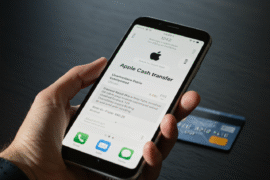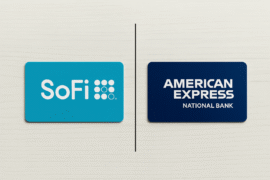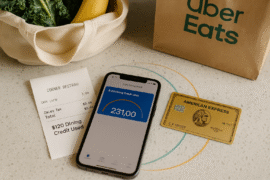This article may contain references to products or services from one or more of our advertisers or partners. We may receive compensation when you click on links to those products or services. Nonetheless, our opinions are our own.
The information presented in this article is accurate to the best of our knowledge at the time of publication. However, information is subject to change, and no guarantees are made about the continued accuracy or completeness of this content after its publication date.

Updated by Albert Fang
- Key Highlights
- Introduction
- Understanding the Importance of Saving for Kids
- Types of Savings Accounts Available for Kids
- Preparing to Open Your Child’s First Savings Account
- Detailed Breakdown of Each Account
- Capital One Kids Savings Account
- Alliant Credit Union Kids Savings Account
- Chase First Banking (Kids’ Checking Account)
- Wells Fargo Way2Save® Savings
- A Step-by-Step Guide to Choosing the Right Savings Account
- Opening Your Child’s Savings Account
- Maximizing the Savings Account
- Conclusion
- Frequently Asked Questions
- Recommended Reads
Key Highlights
- Teach financial skills early: A kids’ savings account is a great way to introduce your child to money management.
- Support savings goals: These accounts help kids set and track goals, whether for a new toy or long-term aspirations.
- Grow interest: Savings accounts earn interest, teaching children how their money can grow over time.
- Parental control: Most kids’ savings accounts include features for parents to monitor transactions and set limits.
- Fun learning tools: Many banks offer engaging resources, such as games and quizzes, to teach kids about saving and spending wisely.
Introduction
Teaching financial literacy to children is an essential life skill, and starting early can set the foundation for a lifetime of good habits. One effective way to achieve this is by opening a savings account for your child. These accounts not only offer a safe place to store money but also help kids understand saving, budgeting, and earning interest—all under a parent or guardian’s supervision.
Understanding the Importance of Saving for Kids
As parents, ensuring our children are financially literate is key to their long-term success. Saving isn’t just about building a balance in the bank; it’s about developing habits that promote discipline, delayed gratification, and goal-setting.
Teaching kids about saving early helps them:
- Avoid unnecessary debt.
- Develop a sense of responsibility.
- Achieve both short- and long-term financial goals.
These habits create a strong foundation for managing money wisely in adulthood.
The Benefits of Starting Early
One of the most significant advantages of starting early is the power of compound interest. Even small amounts deposited regularly can grow significantly over time, demonstrating the value of consistency and patience to young savers.
By introducing kids to savings accounts at an early age, you also help them:
- Set and achieve savings goals, creating a sense of accomplishment.
- Learn how to track progress and budget effectively.
- Understand the importance of financial planning in a fun, engaging way.
These early lessons equip kids with the skills they need to make informed financial decisions in the future.
How Savings Accounts Can Teach Financial Literacy
Kids’ savings accounts often come with features that promote hands-on learning:
- ATM or Debit Cards: Teach kids how to withdraw and spend responsibly.
- Online Tools: Allow children to monitor their balances and transactions.
- Goal-Setting Features: Help kids save for specific items, teaching delayed gratification.
These accounts go beyond holding money—they provide a platform for teaching essential financial concepts like budgeting, needs versus wants, and the value of saving over spending.
Types of Savings Accounts Available for Kids
Financial institutions offer a variety of options for young savers. Whether you opt for a traditional savings account or a child-specific one, it’s essential to choose an account that aligns with your child’s needs and your family’s financial goals.
Traditional Savings Accounts vs. Child-Specific Accounts
| Account Type | Pros | Cons |
|---|---|---|
| Traditional | Simple setup, available at most banks, parental oversight. | Typically lower interest rates, fewer kid-friendly features. |
| Child-Specific | Higher interest rates, fun learning tools, goal-setting features. | May have stricter requirements, limited in some areas. |
Online Banks vs. Brick-and-Mortar Institutions
| Institution Type | Benefits | Drawbacks |
|---|---|---|
| Online Banks | Higher interest rates, lower fees, convenient apps for money management. | No in-person interaction, which some parents and kids may prefer. |
| Brick-and-Mortar Banks | Personal interaction, opportunities for kids to visit and engage with bank staff. | Lower interest rates, higher fees compared to online banks. |
The choice depends on your family’s preferences. Online banks may suit tech-savvy families, while traditional institutions offer a more personal touch.
Preparing to Open Your Child’s First Savings Account
Opening a savings account for your child is a simple yet impactful step. To ensure a smooth process, gather the necessary documents and think about the features that best suit your child’s age and financial knowledge.
What You Need to Know Before Opening an Account
- Joint Account Requirements: Most kids’ accounts require a joint account with a parent or guardian.
- Minimum Deposit and Balance: Research the minimum deposit needed and whether the account has monthly fees.
- Educational Tools: Some accounts include resources to help kids learn about saving and spending.
Documents and Information Required
To open a savings account, you’ll generally need:
- Your child’s Social Security Number or ITIN.
- A government-issued ID for the parent or guardian.
- Proof of address, such as a utility bill.
If you’re a legal guardian, additional documents proving your guardianship may be required.
Detailed Breakdown of Each Account
Capital One Kids Savings Account
Best for: No minimum balance & easy parental transfers
- APY: 0.30%
- Monthly Fees: None
- Minimum Balance: None
- Features: Parental control, mobile banking, auto-deposits
Pros: No fees, no minimum balance, strong parental controls
Cons: Lower interest rate compared to competitors
Alliant Credit Union Kids Savings Account
Best for: Highest interest rate (APY) on small balances
- APY: 3.10% on first $1,000, then lower rates
- Monthly Fees: None
- Minimum Balance: $5 (credited by Alliant at signup)
- Features: Joint account with parent, online & mobile banking
Pros: Highest APY, no fees, strong parental oversight
Cons: Must be a member of Alliant Credit Union
Bank of America Minor Savings Account
Best for: Those who already bank with Bank of America
- APY: 0.01%
- Monthly Fees: $8 (waived for minors under 18)
- Minimum Balance: $25
- Features: FDIC insured, automatic transfers, linked to parent’s account
Pros: Trusted national bank, easy transfers between accounts
Cons: Very low interest rate, fees if requirements aren’t met
Chase First Banking (Kids’ Checking Account)
Best for: Kids who need spending limits & budgeting tools
- APY: Not a savings account (no interest)
- Monthly Fees: None
- Minimum Balance: None
- Features: Parental controls, spend tracking, allowance management
Pros: Great for teaching kids to budget, no fees
Cons: Not a savings account, no interest earned
Wells Fargo Way2Save® Savings
Best for: Automatic savings transfers
- APY: 0.01%
- Monthly Fees: $5 (waived with conditions)
- Minimum Balance: $25
- Features: Auto-transfer from checking, mobile deposits
Pros: Good for Wells Fargo customers, auto-transfer feature
Cons: Low APY, monthly fees unless conditions are met
A Step-by-Step Guide to Choosing the Right Savings Account
Follow these steps to find the best account for your child:
Step 1: Evaluate Key Features
- Interest Rates: Look for accounts with competitive annual percentage yields (APYs).
- Parental Controls: Ensure the account allows you to monitor transactions and set limits.
- Learning Tools: Check for apps, games, or quizzes to engage kids in learning about money.
Step 2: Compare Interest Rates and Fees
Even small differences in interest rates can have a big impact over time. For example:
| Bank | Interest Rate (APY) | Monthly Fee |
|---|---|---|
| Bank A | 0.05% | $5 (Waived under $100) |
| Bank B | 0.10% | $0 |
| Bank C | 0.25% | $10 (Waived for minors) |
Choose an account with minimal fees and a high APY to maximize your child’s savings.
Step 3: Consider Access and Usability
- Online Banking: Opt for accounts with intuitive mobile apps for easy monitoring.
- ATM/Debit Card Access: Choose access levels appropriate for your child’s age and maturity.
Step 4: Research Account Bonuses
Some banks offer sign-up bonuses or matching contributions for kids’ savings accounts. Others include financial literacy tools, like Capital One’s games and quizzes, to make learning fun.
Opening Your Child’s Savings Account
Once you’ve selected the best account, opening it is straightforward:
- Gather required documents.
- Apply online or visit a local branch.
- Make the initial deposit.
- Set up account monitoring and alerts to track progress.
Maximizing the Savings Account
To make the most of your child’s account:
- Encourage regular deposits from allowances or gifts.
- Discuss short- and long-term savings goals.
- Celebrate milestones to keep saving fun and rewarding.
Conclusion
Opening a savings account for your child is more than just a financial decision—it’s an investment in their future. By teaching them the value of saving and providing the right tools, you equip them with lifelong skills for managing money. Start their savings journey today to set them up for financial success tomorrow.
Frequently Asked Questions
At what age can a child open a savings account?
Most banks allow children to open accounts with a parent or guardian. At age 18, the child gains full control.
Can parents access their child’s savings account?
Yes, kids’ savings accounts are typically joint accounts, allowing parents to monitor and guide their child’s financial activities.
What are the benefits of opening a savings account for kids?
These accounts teach financial literacy, encourage goal-setting, and help kids learn about interest and budgeting.
How can parents teach children about saving through a kids’ savings account?
Parents can use the account to demonstrate budgeting, set savings goals, and celebrate milestones to make learning fun.
What features should I look for in a kids’ savings account?
Focus on high interest rates, low fees, parental controls, and engaging educational tools.

Reviewed and edited by Albert Fang.
See a typo or want to suggest an edit/revision to the content? Use the contact us form to provide feedback.
At FangWallet, we value editorial integrity and open collaboration in curating quality content for readers to enjoy. Much appreciated for the assist.
Did you like our article and find it insightful? We encourage sharing the article link with family and friends to benefit as well - better yet, sharing on social media. Thank you for the support! 🍉
Article Title: Best Saving Account for Kids: Growing Savings for the Next Generation
https://fangwallet.com/2025/02/14/best-saving-account-for-kids-growing-savings-for-the-next-generation/The FangWallet Promise
FangWallet is an editorially independent resource - founded on breaking down challenging financial concepts for anyone to understand since 2014. While we adhere to editorial integrity, note that this post may contain references to products from our partners.
The FangWallet promise is always to have your best interest in mind and be transparent and honest about the financial picture.
Become an Insider

Subscribe to get a free daily budget planner printable to help get your money on track!
Make passive money the right way. No spam.
Editorial Disclaimer: The editorial content on this page is not provided by any of the companies mentioned. The opinions expressed here are the author's alone.
The content of this website is for informational purposes only and does not represent investment advice, or an offer or solicitation to buy or sell any security, investment, or product. Investors are encouraged to do their own due diligence, and, if necessary, consult professional advising before making any investment decisions. Investing involves a high degree of risk, and financial losses may occur including the potential loss of principal.
Source Citation References:
+ Inspo
There are no additional citations or references to note for this article at this time.












































